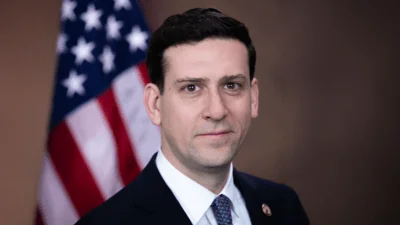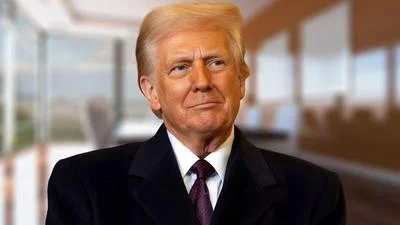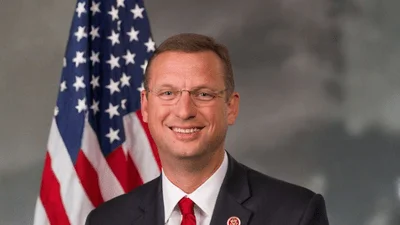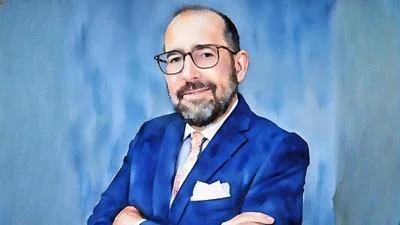As the U.S.-China tech rivalry intensifies, national security experts are rethinking how America should compete. This includes how to integrate domestic industrial policy with foreign strategy, the bureaucratic lag of government adoption of emerging technologies, and China’s aggressive push for technological self-reliance through initiatives like “Made in China 2025.”
David Lin is among the experts working on these issues. He is Senior Director for Future Technology Platforms at the Special Competitive Studies Project (SCSP), and served at the State Department and Central Intelligence Agency. His expertise is in China’s technology policy, cybersecurity, and industrial strategy. He was raised in Chattanooga, Tennessee by Taiwanese immigrant parents who ran a Chinese restaurant for 35 years.
“That’s what got me through private school and college,” Lin says.
His early life, shaped by a strong work ethic and small-town values, gave him a unique perspective on the transformative power of technology—especially in places like Chattanooga, which embraced fiber optics and later quantum technologies.
Lin’s early career trajectory was more serendipitous than strategic. “I just remember going down the list of majors at George Washington University and almost arbitrarily picking international affairs,” he says.
He witnessed 9/11 during his first weeks of college in D.C. “We went to class the next day, and my professor said, ‘This is why we study international affairs.’ That really defined my college experience,” Lin says.
Although he spoke Mandarin at home, Lin didn’t have a deep background on China. That changed when, on his first day at the CIA in 2010, he was handed a thick binder: “This is everything we know about this China tech topic–read it,” he was told.
Lin immersed himself in China’s technological rise. His time in government was enriching and, at times, limiting. “There were so many layers of bureaucracy just to talk to innovators,” he says. “Government isn’t the first adopter of emerging tech—it’s a laggard.”
That frustration, combined with the opportunity to help build SCSP from the ground up, led him to leave government service after 12 years. “We didn’t even have office space at the time, but it was exciting. The chance to have direct access to academia and industry was the pull.”
SCSP, Lin explains, was formed as a private successor to the National Security Commission on Artificial Intelligence. It was inspired in part by conversations between Henry Kissinger and Eric Schmidt, and focuses on how the U.S. can lead in the tech race against China. “We’re a tech-first but China-focused national security organization,” Lin says, “and this is the topic of the decade.”
One of SCSP’s key contributions is comparative analysis—something Lin says government analysts often can’t do. “In the intelligence community, your job is to look at what Red is doing, not what Blue is doing. We try to put those side by side,” he says.
As an example, Lin points to China’s operating system development: “Even though China is making progress, globally it's still just a fraction of the market share compared to Windows, Google, or Apple.”
Lin recently testified before the U.S.-China Economic and Security Review Commission, reflecting on the tenth anniversary of China’s “Made in China 2025” plan. “The strategy was about self-reliance and indigenous innovation. It set discrete benchmarks—70% of certain sectors had to be China-sourced. That raised alarms,” Lin says.
He witnessed these shifts firsthand in Shanghai, where U.S. companies had to navigate steep market access restrictions and share intellectual property in exchange for domestic market entry.
In contrast, Lin believes the U.S. has made progress with a more strategic policy approach. “There’s now recognition that to compete effectively, we need to protect and promote our domestic industries,” he says.
He cites the Chips and Science Act and outbound investment screening as examples of this dual strategy. “Even the new OSTP director recently used the terms ‘protect and promote.’ It’s about treating domestic and foreign policy holistically.”
But China remains a formidable rival. “They can direct a whole-of-nation effort in a way we can’t. That’s a daunting competitor to face,” Lin says. That’s why initiatives like SCSP’s AI+ Expo matter. The annual event, now expanding to three days at the Washington Convention Center, combines cutting-edge technology with high-level policy dialogue. “It’s like if you took the Munich Security Conference and the Consumer Electronics Show and put them under one roof,” Lin says.
The Expo features panels, a drone cage, a hackathon, and even a career fair—all free to attend. “That speaks to our public education mission. We’re trying to lower the barrier for people to understand and get involved in these important issues,” Lin says. “It’s a whole carnival of tech and policy events happening all under one roof.”
For Lin, the mission continues: bridging government, industry, and the public in a fast-moving race to define the future.









